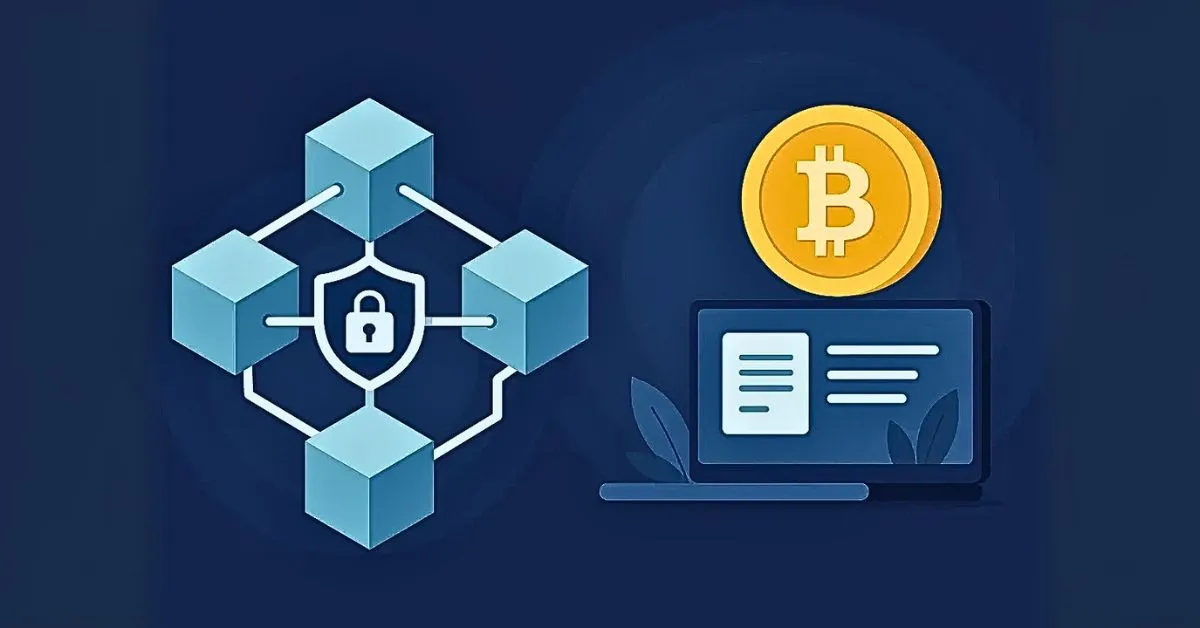
What Is Blockchain Technology? Blockchain from A to Z
1. What is Blockchain?
Blockchain is a distributed database system that allows digital asset data to be recorded and stored across blocks in a transparent and immutable manner. These blocks are linked together via cryptographic hash functions and arranged in chronological order, forming a chain.
This technology is also referred to as Distributed Ledger Technology (DLT) because it operates without control from any centralized authority or intermediary.
2. History of Blockchain
The concept of blockchain was first introduced in the early 1990s by researchers Stuart Haber and W. Scott Stornetta. However, it wasn’t until late 2008 that Satoshi Nakamoto released a white paper introducing a peer-to-peer (P2P) electronic cash system called Bitcoin, which clearly established the operational model of blockchain.
On January 3, 2009, the first block of the Bitcoin blockchain, known as the Genesis Block, was mined by Satoshi Nakamoto with a block reward of 50 BTC. The first Bitcoin transaction occurred on January 12, 2009, when Satoshi sent 10 BTC to Hal Finney, a software developer in the U.S.
Blockchain was created to address the limitations of traditional financial transactions, such as the double-spending problem and the dependency on third-party intermediaries like banks or payment services.
3. Blockchain Structure
Blockchain consists of "blocks" linked together to form a "chain." Each block contains transaction data and is sequentially extended. The structure of each block includes:
• Block Header: Contains the hash of the previous block, timestamp, nonce, and Merkle Root.
• Previous Hash: Hash value of the preceding block.
• Timestamp: Time the block was created.
• Nonce: A unique number used during mining to generate a valid hash.
• Merkle Root: Final hash value of the combined transactions in the Merkle Tree.
• A hash is a fixed-length string generated from input data using cryptographic hash functions.
4. How Blockchain Works
The transaction process on a blockchain involves the following steps:
• Transaction Request: A user initiates a transaction; the details are recorded and sent to network nodes.
• Transaction Validation: Nodes validate the transaction based on the blockchain’s consensus algorithm.
• Transaction Storage: Validated transactions are stored in a block.
• Block Added to Chain: The new block is added by linking its hash to the previous block, creating a secure chain.
• The Genesis Block (first block) has no predecessor, so its previous hash is a string of zeros.
5. Key Characteristics of Blockchain
Blockchain was developed to overcome traditional transaction limitations. Its main characteristics include:
• Decentralization: Not controlled by any central authority; relies on nodes and algorithms.
• Distributed: Maintained by nodes worldwide, distributing computing power for efficiency.
• Immutability: Once written, data on the blockchain cannot be altered or deleted.
• Security: Employs cryptographic techniques to secure data and maintain integrity.
• Transparency: All transaction data is publicly accessible for auditing and traceability.
• Trustless: Relies on automatic validation by nodes, eliminating the need for trust between parties.
Consensus Mechanisms in Blockchain
A consensus mechanism ensures that all nodes in a blockchain network agree on its current state. Common consensus algorithms include:
• Proof of Work (PoW): Miners solve complex puzzles using computing power to validate transactions and earn rewards.
• Proof of Stake (PoS): Participants stake tokens for a chance to validate transactions and create new blocks.
• Delegated Proof of Stake (DPoS): Token holders vote and delegate validation rights to selected nodes.
• Proof of Authority (PoA): Relies on identity and reputation instead of token ownership for validation rights.
Stages of Blockchain Development
Blockchain has evolved through various stages, each marked by different applications:
• Blockchain 1.0 – Currency: First-generation blockchain used for digital currencies like Bitcoin.
• Blockchain 2.0 – Smart Contracts: Automates agreements using smart contracts (e.g., Ethereum).
• Blockchain 3.0 – Decentralized Applications (dApps): Enables decentralized apps operating independently on blockchain networks.
• Blockchain 4.0 – Industry Integration: Applies blockchain to industries, business, and real-world production.
Applications of Blockchain Technology
Blockchain has wide applications across many sectors:
• Cryptocurrency: Enables secure, transparent digital currency transactions (e.g., Bitcoin, Ethereum).
• Smart Contracts: Automatically executes contract terms when predefined conditions are met.
• Supply Chain Management: Improves transparency and traceability of products.
• Digital Identity: Builds secure and tamper-proof identity verification systems.
• Real Estate: Simplifies property transactions and reduces fees and time.
• Copyright Protection: Safeguards intellectual property by recording immutable ownership.
• Banking & Finance: Enhances efficiency, reduces transaction costs and time.